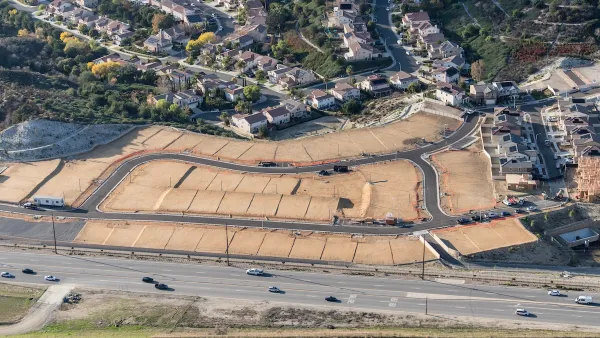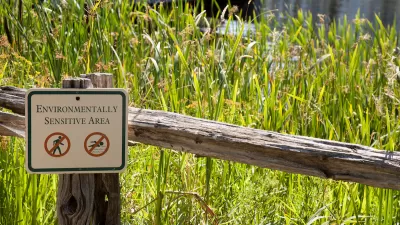The California Environmental Quality Act, commonly referred to as CEQA for short, has been influencing planning and development in California for 50 years, creating a constant source of controversy and criticisms from both sides of the debate.

William Fulton writes to commemorate the 50th anniversary of the California Environmental Quality Act, one of the most influential and controversial laws in the history of U.S. planning. Fulton, who has been writing about the law for 40 years of the 50 years the law has been in existence, sums up CEQA's influence and troubles thusly:
CEQA is not technically a land-use law, but it has probably had as much impact on California land use as any statute on the books. It’s confounding in many ways – confoundingly complicated, confoundingly resistant to reform, and indeed confoundingly resistant to any rational assessment of whether it has “worked,” whatever “worked” means. Business leaders and developers blame it for every economic downturn in California whether CEQA deserves the rap or not, and environmentalists and labor unions cling to it as the only to extract what they want from developers.
Given the big round number hanging around CEQA's neck (the law was signed into law by then-Governor of California Ronald Reagan), Fulton to calculate CEQA's legacy in California.
FULL STORY: CEQA At 50

Maui's Vacation Rental Debate Turns Ugly
Verbal attacks, misinformation campaigns and fistfights plague a high-stakes debate to convert thousands of vacation rentals into long-term housing.

Planetizen Federal Action Tracker
A weekly monitor of how Trump’s orders and actions are impacting planners and planning in America.

San Francisco Suspends Traffic Calming Amidst Record Deaths
Citing “a challenging fiscal landscape,” the city will cease the program on the heels of 42 traffic deaths, including 24 pedestrians.

Defunct Pittsburgh Power Plant to Become Residential Tower
A decommissioned steam heat plant will be redeveloped into almost 100 affordable housing units.

Trump Prompts Restructuring of Transportation Research Board in “Unprecedented Overreach”
The TRB has eliminated more than half of its committees including those focused on climate, equity, and cities.

Amtrak Rolls Out New Orleans to Alabama “Mardi Gras” Train
The new service will operate morning and evening departures between Mobile and New Orleans.
Urban Design for Planners 1: Software Tools
This six-course series explores essential urban design concepts using open source software and equips planners with the tools they need to participate fully in the urban design process.
Planning for Universal Design
Learn the tools for implementing Universal Design in planning regulations.
Heyer Gruel & Associates PA
JM Goldson LLC
Custer County Colorado
City of Camden Redevelopment Agency
City of Astoria
Transportation Research & Education Center (TREC) at Portland State University
Jefferson Parish Government
Camden Redevelopment Agency
City of Claremont





























